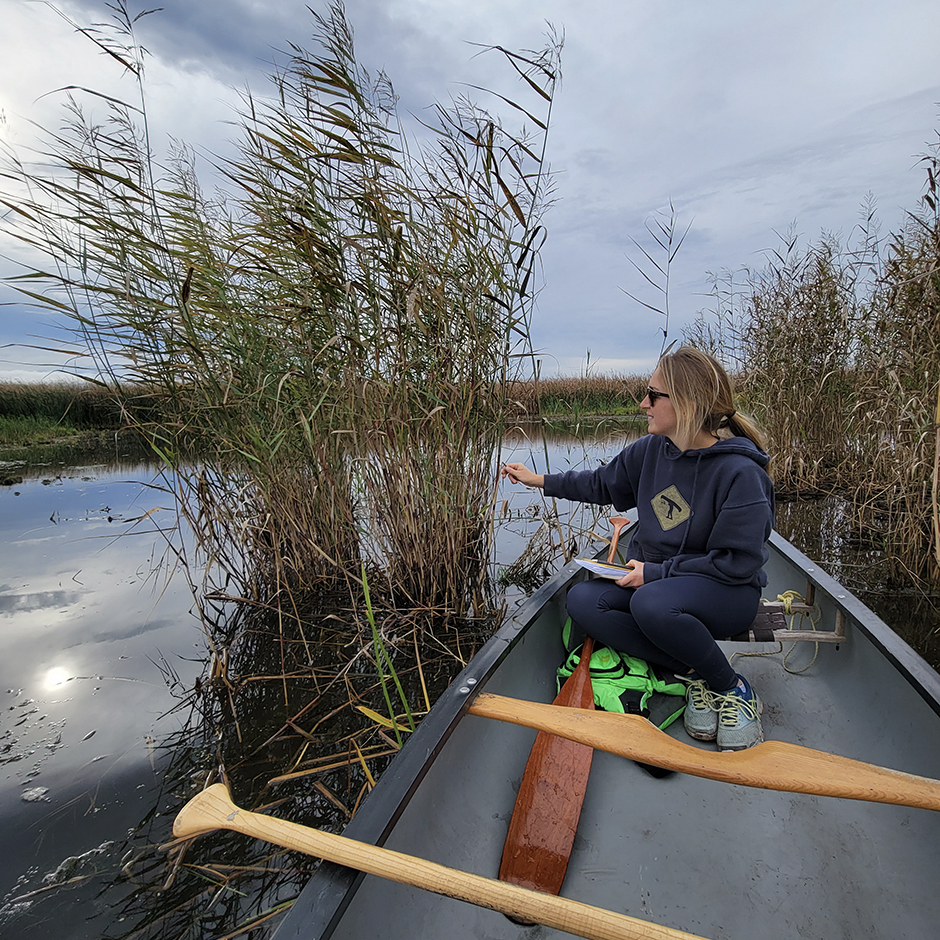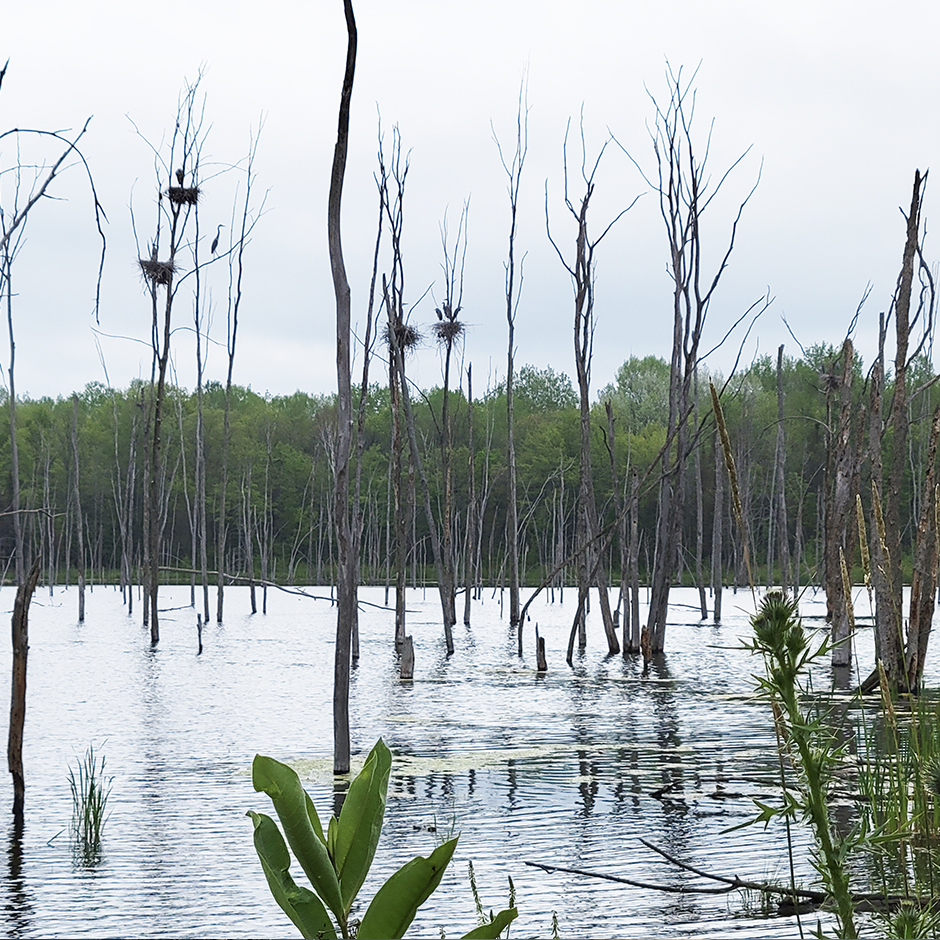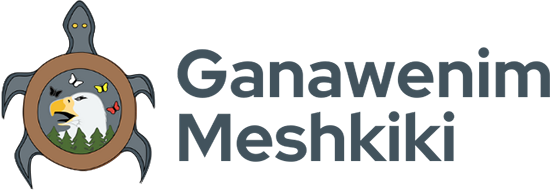Project Details
Project Title: Save Matchedash Bay
Funding Recipient: Georgian Bay Forever
Funding Awarded: $60,000
Project Partners: Severn Sound Environmental Association
Targeted Species at Risk: Blanding’s turtle
Project Status: Ongoing (Two-year duration, 2021-2022)

Project Summary
In 2021, Georgian Bay Forever (GBF), with the help of project partners at Environment and Climate Change Canada, the MTM Conservation Association, and the Severn Sound Environmental Association, kicked off a two-year project to save Matchedash Bay. GBF received $45,000 from Ganawenim Meshkiki’s Eastern Georgian Bay Initiative (EGBI) to advance the first year of the project, which involved two parts:
- A program to remove invasive European Common Reed (commonly known as Phragmites), and
- Monitoring Blanding’s turtle, in support of species at risk (SAR) conservation efforts and to advance knowledge of the risk of Phragmites to biodiversity in Matchedash Bay.
Matchedash Bay is a Provincial Wildlife Area and a Wetland of International Importance with associated requirements for conservation and protection. Located in the southeastern reaches of Georgian Bay, the marshes of Matchedash Bay are considered the largest and most diverse of Georgian Bay’s extensive coastal wetlands. The more than 170 bird species, 568 plant species, and innumerable fish, reptiles, amphibians, and mammals that inhabit the wetland depend on it for life-sustaining activities such as foraging, spawning, and shelter. Additionally, local communities and visitors rely on the ecosystem for recreational pursuits and the intrinsic value of nature.
Recently, Matchedash Bay has been subject to increased risk related to human developments, agricultural activities, and the highly invasive Phragmites. As part of their 2021 project efforts, GBF took action to identify and remove invasive Phragmites from multiple sites in Matchedash Bay. In the Great Lakes coastal ecosystems, invasive Phragmites grow into extremely dense monocultures that outcompete native vegetation and reduce biodiversity and habitat for native plants and animals. Subsequently, these effects impair the proper wetland function necessary to maintain water quality, provide shelter and food for other species, and sequester carbon. In total, GBF and their partners identified 44 stands of invasive Phragmites, began control of 18 Phragmites sites (note: control is a multi-year process), and left 26 sites for future treatment due to capacity and timing constraints.
GBF also used the EGBI funds to undertake turtle monitoring in Matchedash Bay, including efforts to document and observe Blanding’s turtle which is one of three SAR turtle species in Ontario’s eastern Georgian Bay region. Field investigations were undertaken over 23 days in spring, summer, and fall to document turtle incidence and behaviours such as the use of habitat types and features in Matchedash Bay. Blanding’s turtle was the primary focus of field investigations, but all species of turtles encountered were documented.
Both aspects of the 2021 project efforts, Phragmites control and SAR turtle monitoring, engaged landowners, cottage associations, naturalists, and volunteers, resulting in increased public education and knowledge on the importance of Matchedash Bay conservation and protection. Building on project successes in 2022, GBF plans to:
- continue monitoring and managing invasive Phragmites in Matchedash Bay, through additional mapping and development of a priority plan,
- continue educating the community, recruiting volunteers, and hiring two summer staff for Phragmites removal,
- plan Spring field surveys for ongoing turtle monitoring, and
- undertake a social media campaign to garner interest, support, and volunteers to support turtle monitoring efforts going forward.
2021 Project Presentation

Further Details
For more information on the Save Matchedash Bay Project, please visit the links below.
Severn Sound Environmental Association website
Matchedash Bay Provincial Wildlife Area – Ramsar website
ON Government – Blanding’s turtle
ON Government – Phragmites
Protecting the wetlands of Matchedash Bay | Georgian Bay Forever
PDF – Save Matchedash Bay 2021 Report
